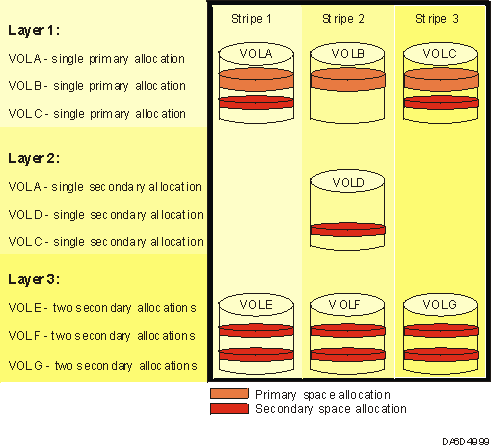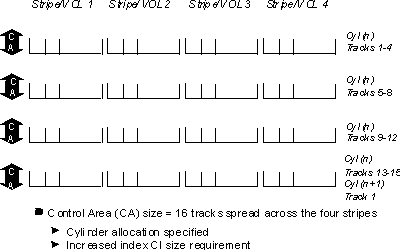 z/OS DFSMS Using Data Sets
z/OS DFSMS Using Data Sets
 z/OS DFSMS Using Data Sets
z/OS DFSMS Using Data Sets
|
Previous topic |
Next topic |
Contents |
Contact z/OS |
Library |
PDF
VSAM Data Striping z/OS DFSMS Using Data Sets SC23-6855-00 |
|
|
To use striped data, a data set must be in extended format. All
VSAM data set organizations are supported for striped data:
A striped data set has tracks that spread across multiple devices, as is the case for sequential access method or the CIs for VSAM. This format allows a single application request for records in multiple tracks or CIs to be satisfied by concurrent I/O requests to multiple volumes. The result is improved performance for sequential data access by achieving data transfer into the application at a rate greater than any single I/O path. The scheduling of I/O to multiple devices to satisfy a single application request is referred to as an I/O packet. VSAM data striping applies only to data sets that are defined with more than one stripe. Any data set listed with one stripe is in the extended format and is not considered to be a striped data set. Figure 1 illustrates primary and secondary
space allocations on multiple volumes for a striped VSAM data set.
Figure 1. Primary and Secondary Space Allocations for Striped Data Sets
 Figure 2 shows examples of the CIs within
a control area (CA) on multiple volumes for a four-stripe VSAM data
set.
Figure 2. Control Interval in a Control Area
 


|
 Copyright IBM Corporation 1990, 2014 Copyright IBM Corporation 1990, 2014 |